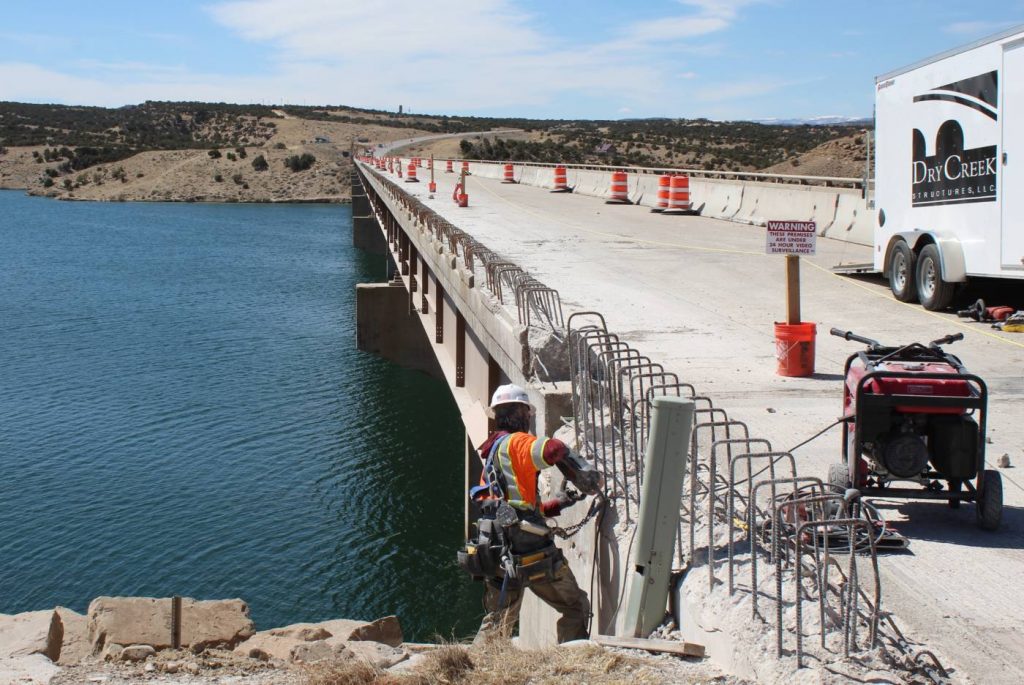U.S. 40; Starvation Bridge- Environmental Protection and Safety Highlights
July 6, 2021

A construction project during Summer 2021 updated and preserved the Starvation Reservoir bridge on U.S. 40 in Duchesne County. Improvements to the bridge required renovations to the bridge barrier walls (called “parapet walls”) and resurfacing the concrete bridge deck to extend the life of the roadway.
As with all UDOT projects, the top priority was safety for the traveling public, onsite workers and the surrounding environment. Because most of the project included work being done directly over Starvation Reservoir waters, significant steps were taken to protect and preserve the environment in the area, including an innovative plan to capture all demolition debris to keep it from falling into the reservoir.
Because of the unique characteristics of the work zone, Dry Creek Structures, the contractor for this project, designed special container buckets to capture demolition debris. This 16-foot catch bucket was attached to the end of an excavator and was lowered onto the backside of the parapet. The bucket was outfitted with rubber bumpers to provide a secure seal to the wall and to protect against damage to the existing infrastructure. The bottom of the bucket extended to fit under the bridge deck to ensure that the debris was captured. The pan located on the bottom of the bucket was watertight and provided connections to a vacuum port, which allowed the captured water and slurry materials to be pumped out of the bucket and into a vacuum trailer, without any of it leaking into the waterway below. All demolished materials were transported offsite to be recycled or disposed of in the landfill. Duchesne County recycled the demolished concrete for use as road base throughout the county.
In addition to capturing construction debris, other procedures were in place to provide safety to the workers and the surrounding area. Crews working near or around the edge of the bridge were required to be in a harness and tethered to the bridge to prevent falling. Tools and equipment such as concrete saws were also required to be tethered and secured to prevent dropping into the waterway below. Warning signs and messages were placed throughout the work zone to remind drivers and area visitors about the construction activity and to avoid stopping at or near the bridge. In case of unforeseen emergencies, a water rescue plan was in place that included life-preserving flotation devices and a rescue boat. The implementation of these procedures was critical to ensuring that the environment was protected, and the Starvation Bridge was successfully updated.
Tags: Region Three, U.S. 40 Starvation


